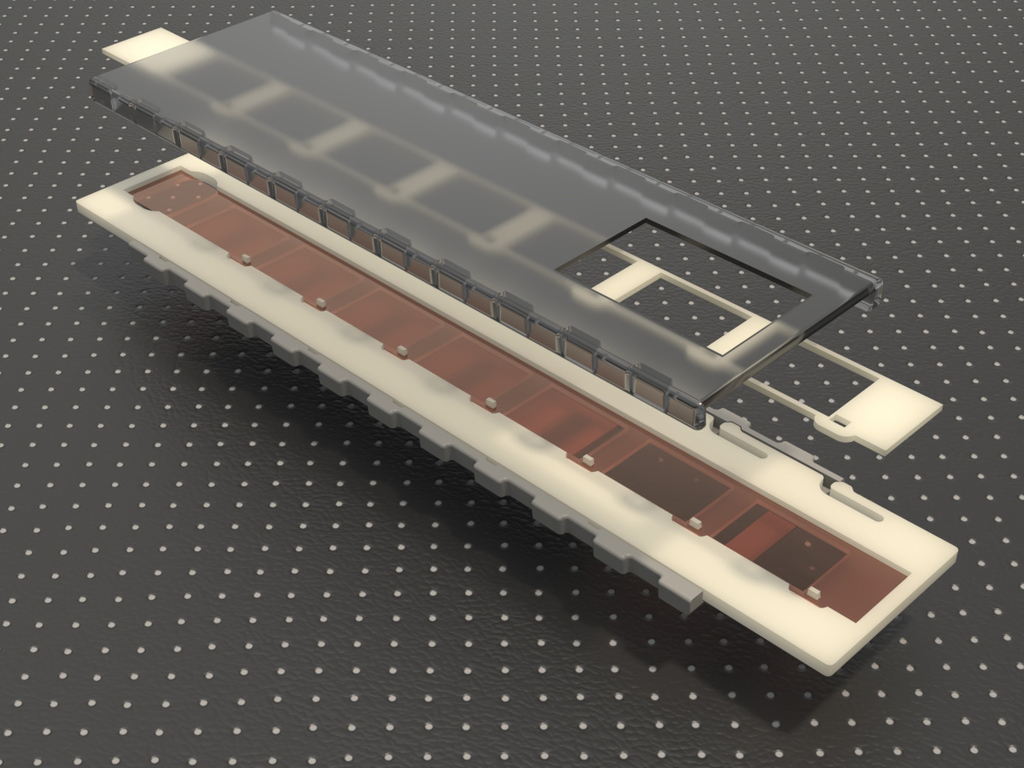
Nikon Coolscan 110 film holder
prusaprinters
<p>If you have 110 film negatives you will find there are few options to use them in scanners. I have an excellent Nikon Coolscan V which handles slides, 35mm negatives both manually and as strips and APS films. But not 110 film. To complicate things 110 film that has been processed often is mounted on a separate handling strip but the film processing companies.</p> <p>This project provides a mount modeled on the Nikon manual 35mm strip scanning mechanism - but modified for both unmounted and mounted 110 film negatives.</p> <p>In addition to STL files I have included 3MF object files which are more amenable to further editing. Rhino3D uses feel free to DM me and reques the 3DM/GH files.</p> <h3>How I Designed This</h3> <p>The design was developed in Rhino3D with extensive use of its Grasshopper geometry programming engine to ensure the design could be optimised rapidly. This is a very powerful tool that allows you to parametise every aspect of a 3D model construction so that tweaks and improvements are immediately integrated with no additional effort to reassembled design elements.</p> <p class="detail-image"><img src="https://cdn.thingiverse.com/assets/ba/7c/f9/70/41/20210819_203120.heic.jpg"/></p> <p class="detail-caption"><strong>The Nikon holder on which the model is based</strong></p> <div><p>The spacings of the images and sprockets on 110 film are only available in the ISO documentation if you pay a lot of money. The first prototype revealed inter-frame spacings are close to - but not exactly 25mm, which meant that the initial design with this assumption "almost but not quite" matched the real world negatives. Incredibly irritatingly, the notch spacing for the mounts used by processors to hold the film have notches at just under 25mm - which end up not aligning with either the film notches or frames. Fortunately, the parameter based approach meant just tweaking the number to have the whole thing updated. </p> The first prototype also mimicked the Nikon symmetrically split film carrier - which turned out not to be such a good idea with thin and flexible plastic substrates. The final design uses an inset for the mounted / unmounted film with registration notches for alignment. This allows a full slot height lower carrier which then slide very smoothly between internal indents set at the frame spacing. Grasshopper meant the changes were quick and easy and applied to both mounted and unmounted film types automatically. <p>Grasshopper also allowed me to selectively fillet internal edges of the base holder, so that the printed parts fit together smoothly without finicky post-print cleanup.</p> <p>Any of these adjustments - particularly in design primitives - require pretty much complete rebuilds of the entire model. Without Grasshopper's design automation, this would have taken a lot if effort for every tweak - something most of us cannot afford and which certainly discourages optimisation. So iIf you do a lot of 3D modelling for functional purposes, then you should really take a look at this tool set; it's streets ahead of anything else on the market... (Recognising Fusion 360 is ideal for CAD/CAM applications...)</p> </div> Category: Other
With this file you will be able to print Nikon Coolscan 110 film holder with your 3D printer. Click on the button and save the file on your computer to work, edit or customize your design. You can also find more 3D designs for printers on Nikon Coolscan 110 film holder.
